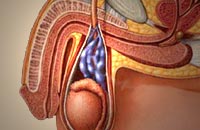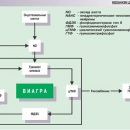Varicocele is a varicose vein extension forming the so-called bortalized (vozoveth) plexus of eggs.
Content
 Word «varicocele» It happened from Latin «Varix»-venous knot and greek «kele»-tumor that together can be interpreted as «tumor» From venous nodes.
Word «varicocele» It happened from Latin «Varix»-venous knot and greek «kele»-tumor that together can be interpreted as «tumor» From venous nodes.
This is — Fully common pathology of the male sexual system among all age groups, but most often occurs in adolescents during their intensive growth (14-15 years).
Varicocele arises due to an increase in pressure in veins forming T.N. Lozovoid plexus of eggs, which is usually associated with the peculiarities of the anatomical location of these veins. More often varicocele, it occurs on the left due to the features of the left testicular vein.
In addition to the anatomical features of the location of the vessels, varicocele may arise as a result of the compression of the veins of eggs (more often at the place of its adaptation to the renal vein) tumor from a number of disputable organs, renal vein thrombosis. For example, the sudden appearance of varicocele in old age is found when kidney cancer.
What manifests itself?
As a rule, patients make complaints against pain in one or both testicles, scrotum or groin area on the side of the lesion, an increase or omission of the scrotum, more often on the left. Pains are intensified during exercise, walking and during intercourse. Often these patients develop infertility.
There are several varicocel development stages:
- Varicose veins are revealed to the touch only when there is a fitting body in the vertical position of the body
- Visually identifies varicose-extended veins of eggs, sizes and consistency of the eggs are not changed
- The pronounced extension of the veins of the grinding plexus of the Eggs, the size and consistency of the eggs are changed









